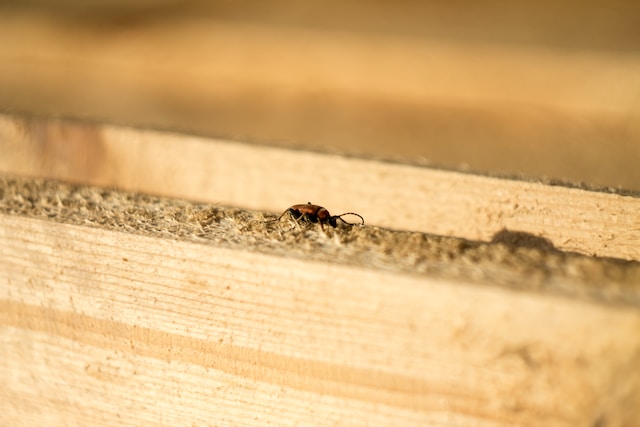Seeing unexplained cracks in drywall or wood damage around doors, windows and floors is a good indicator of termite infestation. The presence of frass, which resembles sawdust and can appear in groups, is another sign of a serious problem.
You may also notice a hollow or papery sound when tapping on walls, caused by eating interior wood. Quiet clicking sounds may indicate termite activity as soldiers bang their heads or shake their bodies to signal danger.
Damaged Wood
Termites tunnel through the wood from the inside out, hollowing and weakening it. This damage can make wooden beams flimsy and prone to cracking and breaking. Tap on wood to see if it sounds hollow, or look for wood-colored droppings called frass that are similar to sawdust and can be mistaken for normal debris. It is best to call experts for an intensive warehouse termite inspection Westerville OH.
Worker termites are wingless and light caramel. They’re responsible for caring for eggs and immature nymphs; feeding and hollowing out the wood; building and maintaining shelter tubes, galleries and other colonial structures; and protecting the colony from predators.
Subterranean termite signs of infestation include mud-lined tunnels and damaged areas that appear as though they’re suffering from slight water damage. Stuck windows and doors and a sweet smell similar to mildew can also indicate an infestation.
Shelter Tubes
While rodents, ants and spiders leave behind easily-identifiable droppings and marks, termites are silent menaces that can cause damage without anyone realizing it. However, knowing what to look for, you can spot signs of infestation before it is too late.
In addition to mud tubes, look for frass (termite droppings that resemble wood-colored pellets) and discarded wings. Also, check for swarmers, which are winged termites that emerge from mature colonies during their reproductive cycle.
If you see a swarm of flying termites, immediately call for a home inspection. Swarmers indicate that a termite colony is nearby and an infestation is developing. If you notice piles of discarded wings, they likely came from a recently-expanded nest.
Swarmers
If you see a cloud of termite swarmers flying around your property, it’s a clear sign that a colony is nearby. Known as alates, these winged reproductive termites look similar to flying ants and signify that a colony is active.
During certain times of the year, mature termite colonies produce swarmers that leave their nest to find mates and start new colonies. The swarmers are poor fliers who only travel short distances from their origin.
Swarmers pair off and shed their wings when they encounter a good match. You may notice piles of discarded wings scattered around your property. Unlike ant or rodent droppings, termite wings are paper-thin and light in color.
Smells
Nationwide, termites inflict more than $2.5 billion in damage to homes and other wood structures yearly. These small pests hide beneath and within the wood, munching away on it to leave paper-thin layers where strong support used to be.
Like rodent and cockroach droppings, termite droppings (frass) have a distinct, salt-and-pepper smell. They often appear in mounds around entry points, such as cracks in foundation walls, joists or doors and windows.
Mud tubes, ridges on wallpaper and pinholes with piles of sand-grain-size pellets can indicate an infestation as well. A licensed pest control professional knows where to look for these signs and can use various treatment options to eliminate them. These include soil treatments, like liquid and foam injections, and fumigation with sulfuryl fluoride or methyl bromide.
Droppings
Like any wood-eating insect, termites leave behind droppings. These tiny pellets are known as frass and often appear near the entry point of a tunnel on a wooden surface. Since they look so similar to sawdust, these piles are often overlooked, especially in workrooms used for wood projects.
Drywood termites clean their nests by pushing fecal pellets (remnants of digested wood) out through kick-out holes in the wood. Little mounds of pellet-shaped droppings will form directly underneath these holes and may resemble small piles of salt or pepper.
Termite infestations are hard to spot and extremely destructive to wood. If you see signs of these pests, contact a professional to schedule an inspection as soon as possible. You can prevent them from getting out of hand by storing firewood away from your home, keeping gutters and downspouts unobstructed so that water flows away from the house and fixing leaky pipes immediately.

